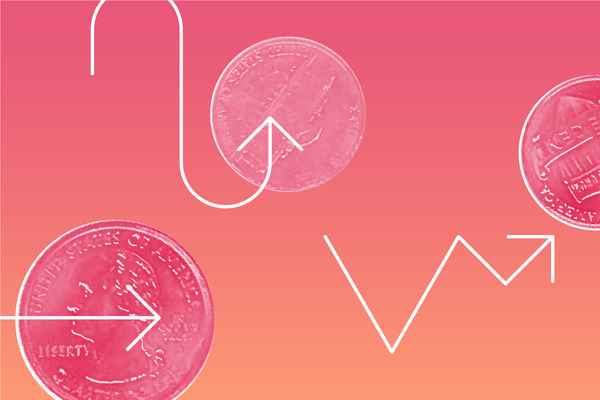
Back in 2021, Canada’s Bruce Power issued the world’s first ever nuclear green bond, a $500 million offering to be used in refurbishing existing nuclear reactors. The Bruce Power issue “was a watershed moment, changing how nuclear power can be categorized and financed, and creating a new catalyst for sustainable debt,” says Magali Gable, Director of sustainable finance and BMO Capital Markets. Nine months later, Ontario Power Generation (OPG) followed, with a similar $300 million green bond.
Together, that’s $800 million in capital for a relatively new space. “The green bond market is still relatively young, having launched in 2007 with issuance from the European Investment Bank and the World Bank,” noted DBRS Morningstar’s report on Canada’s growing role as an issuer. Sustainable investing started with green loans and green bonds. Many of these investments have green ‘use of proceeds’, meaning that the proceeds from these bonds are earmarked for green projects but are backed by the issuer's entire balance sheet.
Nuclear Green Bonds See Six-times Oversubscription
The reception was not stingy. Both bonds were about six-times oversubscribed, the one by Bruce Power having “half its uptake from among ESG investors,” Gable reports.
“It’s part of a resurgence of support for nuclear power worldwide; people realize increasingly that, in order to meet aggressive climate goals, you need it,” says Tom Li, Vice-president, Energy, Utilities and Natural Resources at DBRS Morningstar.
“Green bonds are a valuable innovation in finance and potentially a powerful force for decarbonizing the global economy,” says Morningstar’s Director of Investment Stewardship, Jackie Cook. But this is a new field, and while promising, Cook also warns that there is the risk that green lending may also inadvertently support carbon-intensive business models. “Green bonds, in particular, may be an asset class vulnerable to greenwashing,” notes Cook.
“There’s a strong and growing demand for green bonds – increasingly we’re hearing about the ‘greenium’ where investors are prepared to pay higher prices for a slightly lower investment yield,” says Cook, “This means that there are incentives for greenwashing at each level of finance, from the issuer up.”
“Not everybody that has a nuclear reactor can go ‘green’, warns Jonathan Hackett, Managing Director, Co-Head of Energy Transition, and Head of Sustainable Finance at BMO Capital Markets. “They need to demonstrate that they are credibly green, have the necessary managing processes in place, and can sustain investor scrutiny.”
It’s Not Just Large Reactors, Smaller Ones Are Growing Too
With 440 plants in operation, nuclear power already supplies about 10% of electricity worldwide, according to the World Nuclear Association. With 50 reactors presently under construction, nuclear should represent 15% of all electricity generation.
This figure doesn’t take into account the capacity that new small modular reactors (SMR), advanced modular reactors and micro reactors will bring online by 2050. Nor does it take into account the contribution of nuclear fusion plants if present plans materialize. The first such SMR, built by China Huaneng Group, was feeding the power grid of Shandong Province by December 2021.
In Canada, the Canada Infrastructure Bank has partnered with OPG and committed $970 M to the first SMR. That unit will probably start to operate somewhere after 2028, according to Biao Gong, Senior Vice-president, Project Finance, at DBRS Morningstar. Following that first implementation, Canada plans to install at least five other SMRs.
Traditional nuclear reactors typically generate between one and five terawatts of electricity. SMRs are designed to deliver between 100 and 300 megawatts. The one in Shandong supplies 200 Mw.
Will SMRs Be the Future of Nuclear Energy?
The expectation is that more advanced SMRs will produce much less nuclear waste than their older generation cousins since they will recycle their own waste in the generation process. They will also be much safer because they will shut down passively if a problem occurs. As Hackett points out, “their default state is ‘off’”.
Another key advantage of SMRs, Hackett highlights, is that, before generating electricity, they generate scorching levels of heat, something wind and solar don’t contribute. That heat can be put to use in industrial processes. Hackett gives the example of an SMR that X-energy is scheduled to build for Dow Chemical to supply it with electricity and heat.
In a 2018 report, the Canadian Small Modular Reactor Roadmap Steering Committee projected a bright industrial future for SMRs. An estimated 6,000 new jobs in a high-skill sector could add up to an estimated $10 billion to Canada’s GDP with Canadian power utilities leading an international deployment as global SMR operators in an emerging global market estimated at $150 billion per year by 2040.
Already, 26 SMR technology companies, that have raised about $6.4 billion in capital are gearing up to service this market, Gable reports. That means that opportunities for green nuclear bonds will multiply. SMR deployment “will cost billions of dollars, says DBRS Morningstar’s Tom Li, so there are still many issues to come. When people recognize that nuclear is a new Green, I believe 10% of energy bonds could be nuclear going forward.”





.jpg)














